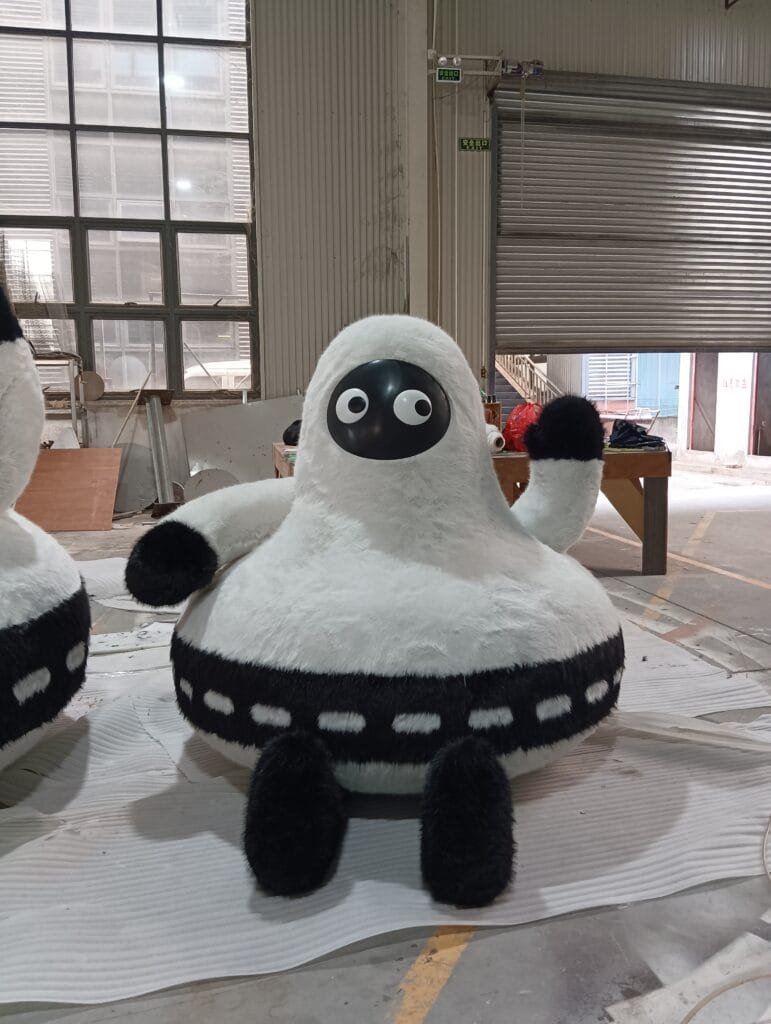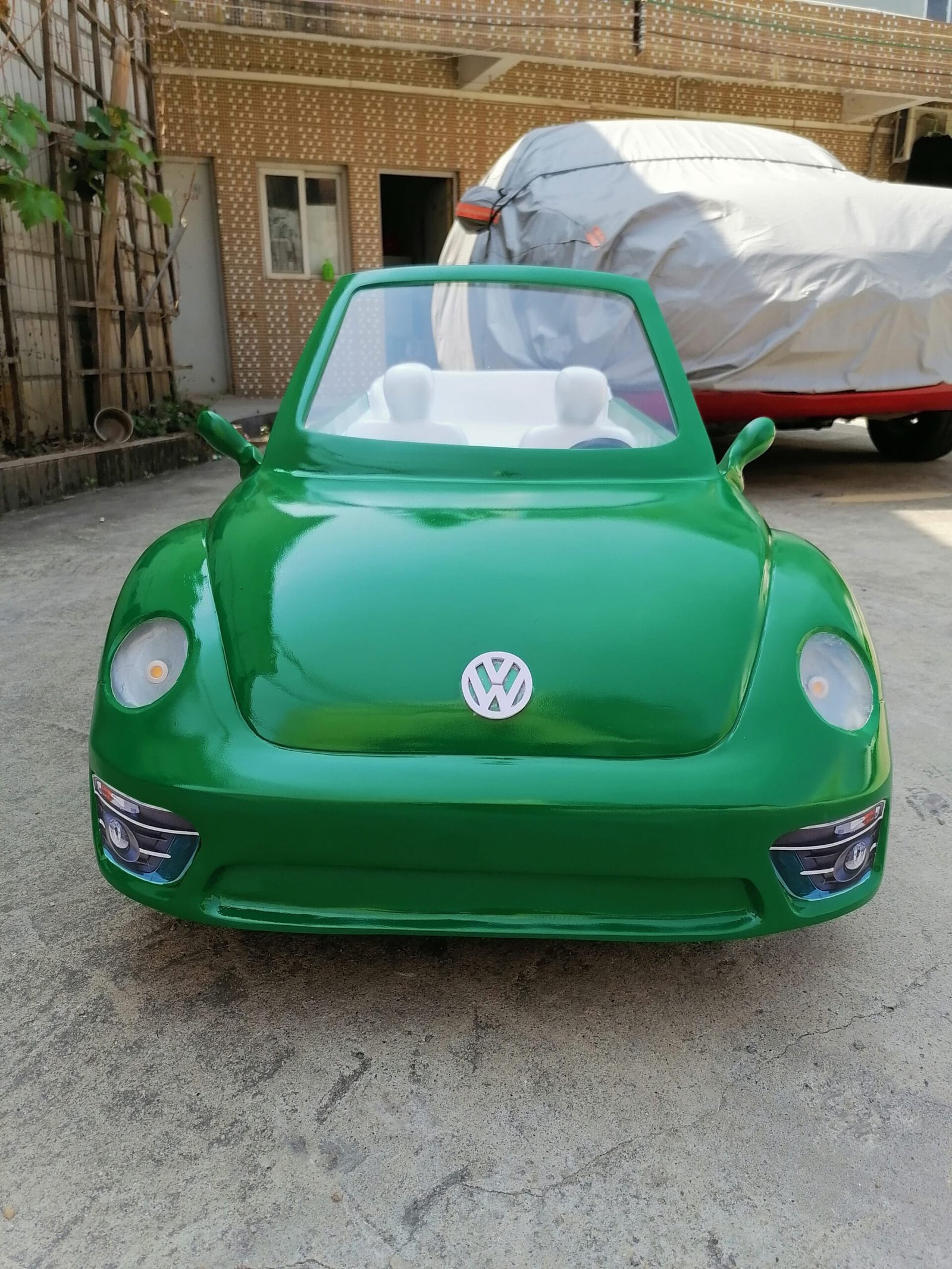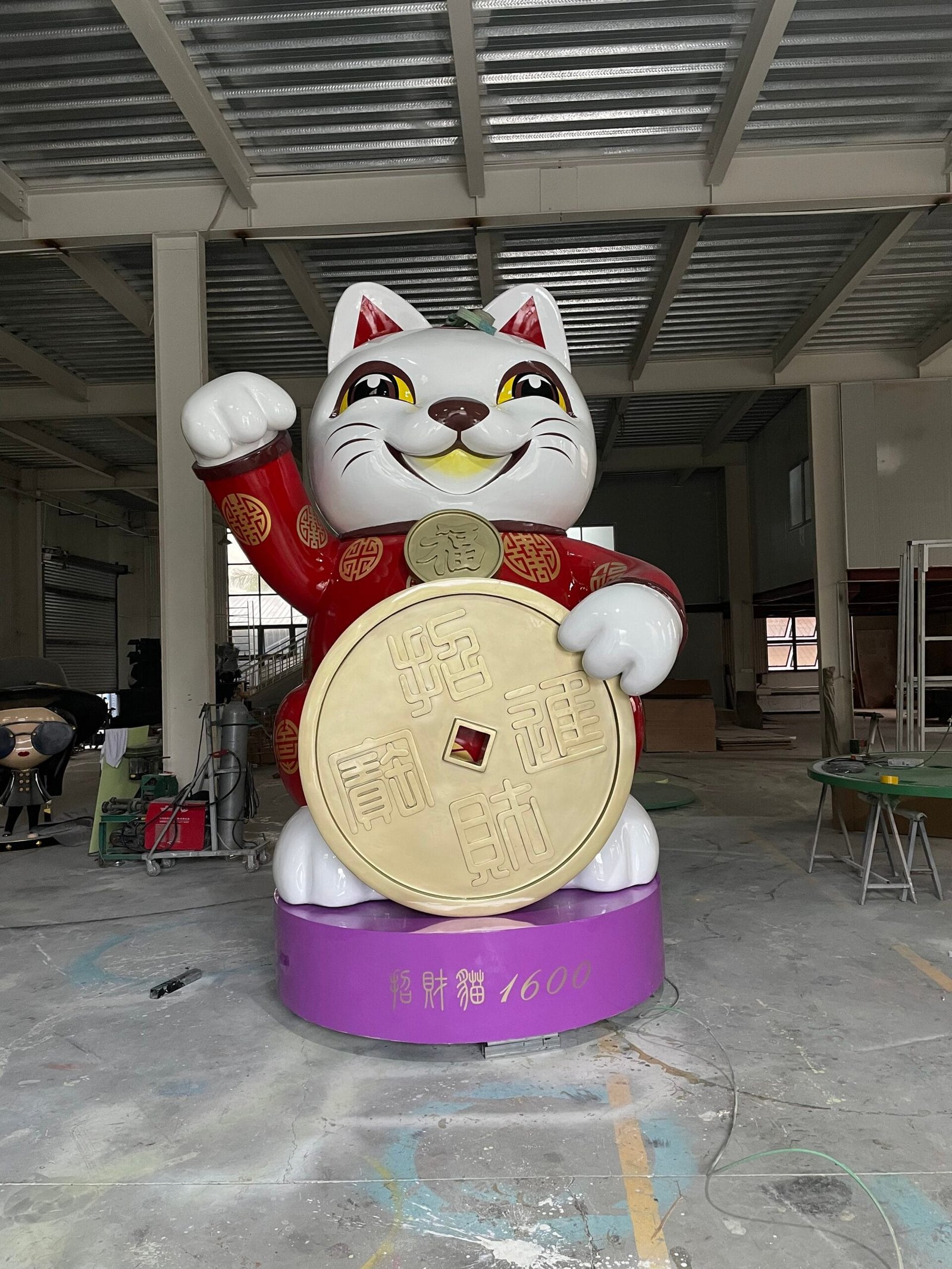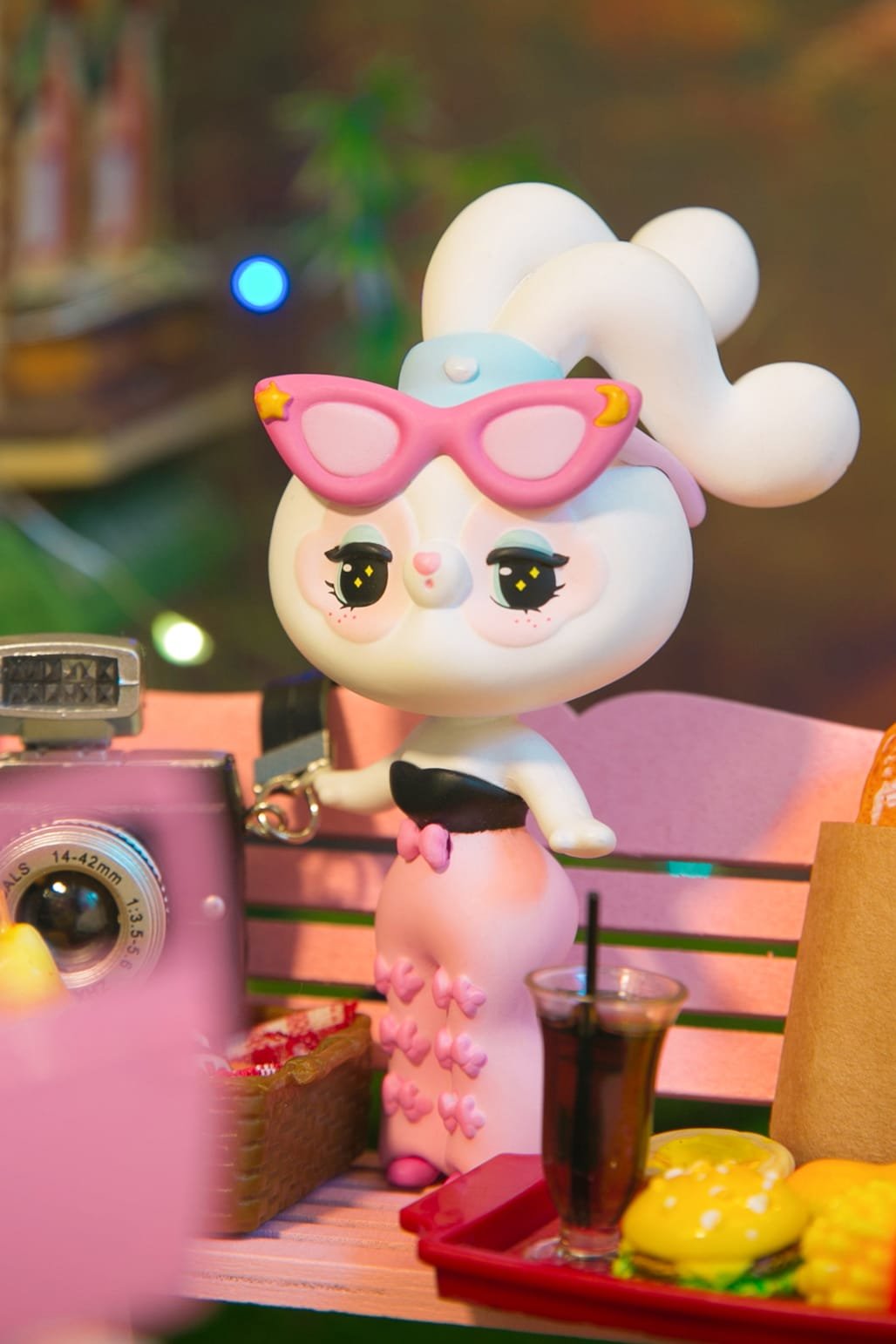Introduction: The Role of Stainless Steel Sculptures in Landscape Design
Stainless steel sculptures have become iconic elements in modern landscape design, transforming public spaces, gardens, and urban environments into visually captivating destinations. Known for their sleek aesthetics, durability, and versatility, stainless steel sculptures blend art with functionality, creating focal points that inspire and engage.
However, while these sculptures offer numerous benefits, their incorporation into landscape design comes with unique challenges. This article explores the highlights and potential obstacles of using stainless steel in outdoor settings and provides actionable strategies for maximizing their impact.
1. The Highlights of Stainless Steel Sculptures
Timeless Aesthetic Appeal
Stainless steel’s reflective and polished surfaces lend a contemporary elegance to any environment. These sculptures interact with natural and artificial light, creating dynamic visual effects that change throughout the day.
Furthermore, stainless steel’s adaptability to various textures—whether mirror-polished, matte, or brushed—makes it suitable for both modern minimalist designs and intricate artistic expressions.
Durability in Outdoor Environments
One of stainless steel’s most celebrated qualities is its resistance to corrosion and weathering. Unlike other materials, such as wood or iron, stainless steel withstands rain, UV rays, and fluctuating temperatures without losing its structural integrity or visual appeal.
Additionally, its low-maintenance nature makes it ideal for long-term installations, requiring only periodic cleaning to retain its shine and condition.
Versatility in Design
Stainless steel is a malleable material that allows for limitless creative possibilities. From abstract forms to lifelike representations, it accommodates various artistic styles and scales.
Moreover, stainless steel pairs seamlessly with other materials like glass, stone, or wood, enabling designers to craft multi-dimensional and engaging installations.
2. Challenges of Incorporating Stainless Steel Sculptures
High Costs
While stainless steel offers unmatched durability and visual appeal, it is a premium material that can significantly impact project budgets. The cost of raw materials, combined with specialized fabrication and finishing processes, makes stainless steel sculptures a considerable investment.
However, this cost can be offset by the material’s longevity and minimal maintenance requirements, making it a worthwhile choice for long-term projects.
Environmental and Maintenance Considerations
Although stainless steel resists most environmental factors, certain conditions, such as high salinity in coastal areas, can cause surface staining or pitting. Regular maintenance becomes essential in such environments to preserve the sculpture’s pristine appearance.
Additionally, highly polished surfaces may show smudges, fingerprints, or scratches more readily, requiring careful handling and cleaning protocols in high-traffic locations.
Installation Complexities
Stainless steel sculptures, especially large-scale ones, often require heavy machinery and skilled labor for installation. The material’s weight and structural requirements add complexity to transportation, assembly, and anchoring.
Furthermore, ensuring safety and stability in public spaces requires thorough engineering assessments and compliance with local regulations.
3. Best Practices for Maximizing the Impact of Stainless Steel Sculptures
Strategic Placement
The placement of stainless steel sculptures plays a crucial role in their success. Key considerations include:
- Visibility: Position sculptures in high-traffic areas, such as entrances, plazas, or central courtyards, to maximize engagement.
- Lighting: Utilize natural and artificial lighting to enhance the sculpture’s reflective qualities and create a dynamic display.
- Context: Ensure the sculpture harmonizes with the surrounding landscape, architecture, and overall theme of the space.
Interactive and Functional Elements
Incorporating functionality into sculptures can elevate their appeal and utility. Examples include:
- Interactive Features: Sculptures that respond to touch, movement, or environmental changes can create memorable visitor experiences.
- Multi-Use Designs: Combining artistic expression with practical functions, such as seating or shade structures, enhances the sculpture’s value.
By adding these elements, designers can create installations that are both visually engaging and purposeful.
Emphasizing Sustainability
As sustainability becomes a priority in design, stainless steel stands out as an eco-friendly material. It is fully recyclable, reducing environmental impact.
Additionally, using sustainably sourced materials and energy-efficient fabrication techniques can further align the project with green initiatives, appealing to environmentally conscious audiences.
4. Maintaining Stainless Steel Sculptures
Regular Cleaning
To preserve their reflective surfaces, stainless steel sculptures require regular cleaning to remove dirt, grime, or pollutants. Non-abrasive cleaning agents and microfiber cloths are recommended to avoid scratches.
Protective Coatings
For sculptures in harsh environments, applying protective coatings can prevent staining, pitting, or other surface damage. This adds an extra layer of durability and extends the sculpture’s lifespan.
Conclusion: Transforming Spaces with Stainless Steel Sculptures
Stainless steel sculptures are more than decorative elements; they are transformative tools that enhance the beauty, functionality, and identity of modern landscapes. While they require thoughtful design, strategic placement, and proper maintenance, the rewards far outweigh the challenges.
By investing in high-quality stainless steel sculptures, designers can create captivating spaces that inspire, engage, and endure. Whether as iconic landmarks or subtle artistic touches, these sculptures remain timeless highlights in contemporary landscape design
以下是英文版文章,标题为**”Stainless Steel Sculptures: Highlights and Challenges in Modern Landscape Design”**,按照优化后的风格撰写,符合您的要求。
Stainless Steel Sculptures: Highlights and Challenges in Modern Landscape Design
Introduction: The Role of Stainless Steel Sculptures in Landscape Design
Stainless steel sculptures have become iconic elements in modern landscape design, transforming public spaces, gardens, and urban environments into visually captivating destinations. Known for their sleek aesthetics, durability, and versatility, stainless steel sculptures blend art with functionality, creating focal points that inspire and engage.
However, while these sculptures offer numerous benefits, their incorporation into landscape design comes with unique challenges. This article explores the highlights and potential obstacles of using stainless steel in outdoor settings and provides actionable strategies for maximizing their impact.
1. The Highlights of Stainless Steel Sculptures
Timeless Aesthetic Appeal
Stainless steel’s reflective and polished surfaces lend a contemporary elegance to any environment. These sculptures interact with natural and artificial light, creating dynamic visual effects that change throughout the day.
Furthermore, stainless steel’s adaptability to various textures—whether mirror-polished, matte, or brushed—makes it suitable for both modern minimalist designs and intricate artistic expressions.
Durability in Outdoor Environments
One of stainless steel’s most celebrated qualities is its resistance to corrosion and weathering. Unlike other materials, such as wood or iron, stainless steel withstands rain, UV rays, and fluctuating temperatures without losing its structural integrity or visual appeal.
Additionally, its low-maintenance nature makes it ideal for long-term installations, requiring only periodic cleaning to retain its shine and condition.
Versatility in Design
Stainless steel is a malleable material that allows for limitless creative possibilities. From abstract forms to lifelike representations, it accommodates various artistic styles and scales.
Moreover, stainless steel pairs seamlessly with other materials like glass, stone, or wood, enabling designers to craft multi-dimensional and engaging installations.
2. Challenges of Incorporating Stainless Steel Sculptures
High Costs
While stainless steel offers unmatched durability and visual appeal, it is a premium material that can significantly impact project budgets. The cost of raw materials, combined with specialized fabrication and finishing processes, makes stainless steel sculptures a considerable investment.
However, this cost can be offset by the material’s longevity and minimal maintenance requirements, making it a worthwhile choice for long-term projects.
Environmental and Maintenance Considerations
Although stainless steel resists most environmental factors, certain conditions, such as high salinity in coastal areas, can cause surface staining or pitting. Regular maintenance becomes essential in such environments to preserve the sculpture’s pristine appearance.
Additionally, highly polished surfaces may show smudges, fingerprints, or scratches more readily, requiring careful handling and cleaning protocols in high-traffic locations.
Installation Complexities
Stainless steel sculptures, especially large-scale ones, often require heavy machinery and skilled labor for installation. The material’s weight and structural requirements add complexity to transportation, assembly, and anchoring.
Furthermore, ensuring safety and stability in public spaces requires thorough engineering assessments and compliance with local regulations.
3. Best Practices for Maximizing the Impact of Stainless Steel Sculptures
Strategic Placement
The placement of stainless steel sculptures plays a crucial role in their success. Key considerations include:
- Visibility: Position sculptures in high-traffic areas, such as entrances, plazas, or central courtyards, to maximize engagement.
- Lighting: Utilize natural and artificial lighting to enhance the sculpture’s reflective qualities and create a dynamic display.
- Context: Ensure the sculpture harmonizes with the surrounding landscape, architecture, and overall theme of the space.
Interactive and Functional Elements
Incorporating functionality into sculptures can elevate their appeal and utility. Examples include:
- Interactive Features: Sculptures that respond to touch, movement, or environmental changes can create memorable visitor experiences.
- Multi-Use Designs: Combining artistic expression with practical functions, such as seating or shade structures, enhances the sculpture’s value.
By adding these elements, designers can create installations that are both visually engaging and purposeful.
Emphasizing Sustainability
As sustainability becomes a priority in design, stainless steel stands out as an eco-friendly material. It is fully recyclable, reducing environmental impact.
Additionally, using sustainably sourced materials and energy-efficient fabrication techniques can further align the project with green initiatives, appealing to environmentally conscious audiences.
4. Maintaining Stainless Steel Sculptures
Regular Cleaning
To preserve their reflective surfaces, stainless steel sculptures require regular cleaning to remove dirt, grime, or pollutants. Non-abrasive cleaning agents and microfiber cloths are recommended to avoid scratches.
Protective Coatings
For sculptures in harsh environments, applying protective coatings can prevent staining, pitting, or other surface damage. This adds an extra layer of durability and extends the sculpture’s lifespan.
Conclusion: Transforming Spaces with Stainless Steel Sculptures
Stainless steel sculptures are more than decorative elements; they are transformative tools that enhance the beauty, functionality, and identity of modern landscapes. While they require thoughtful design, strategic placement, and proper maintenance, the rewards far outweigh the challenges.
By investing in high-quality stainless steel sculptures, designers can create captivating spaces that inspire, engage, and endure. Whether as iconic landmarks or subtle artistic touches, these sculptures remain timeless highlights in contemporary landscape design.
Focus Keywords:
Stainless steel sculptures, modern landscape design, outdoor art installations, durable sculpture materials, sustainable art, interactive sculptures, architectural aesthetics.




